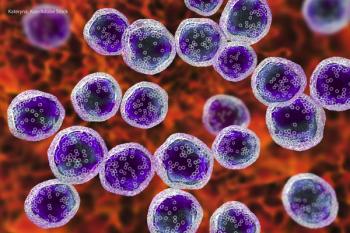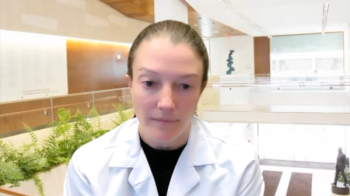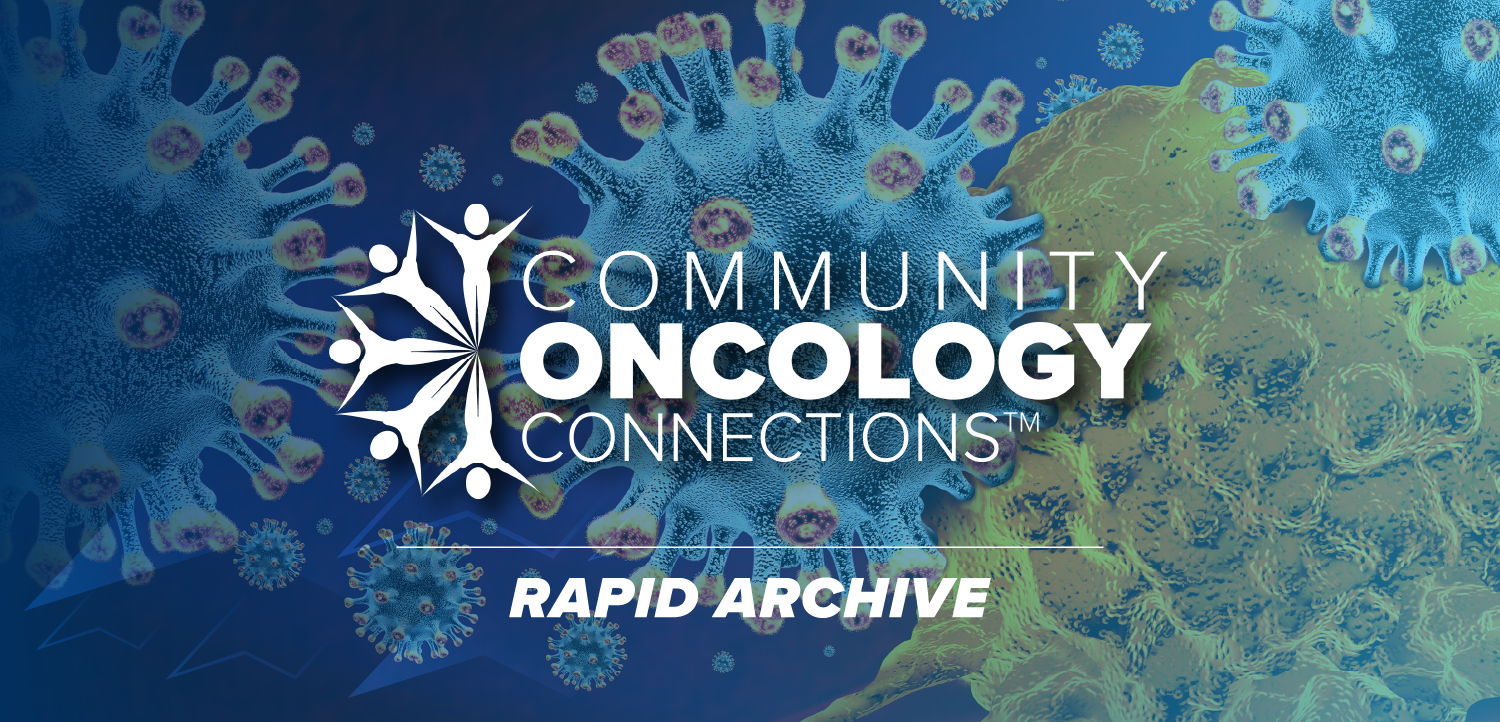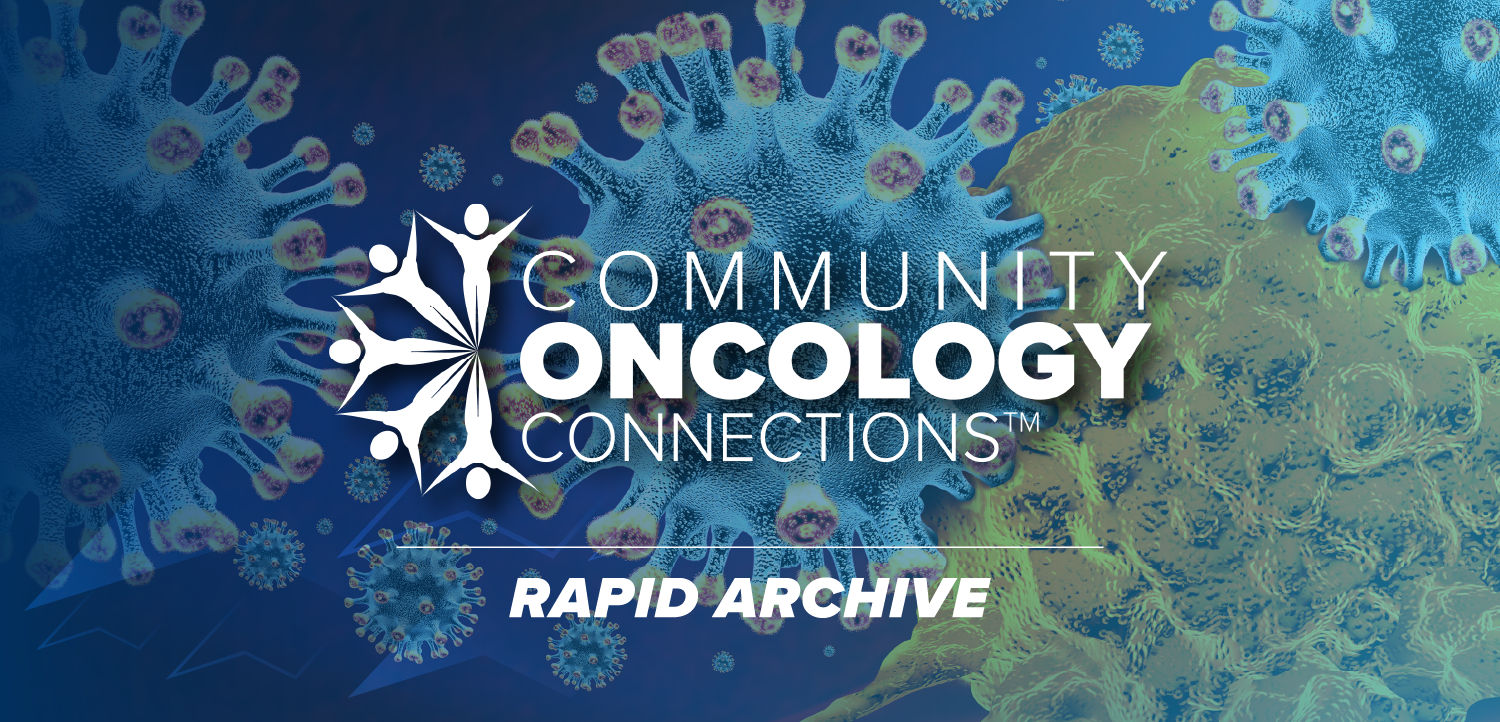
- ONCOLOGY Vol 17 No 2
- Volume 17
- Issue 2
Commentary (Spigel/Winer): Myalgias and Arthralgias Associated With Paclitaxel
Neurotoxicity is a well-describedside-effect of paclitaxeltherapy, often characterizedas a peripheral sensory neuropathy.Neuropathy is a dose-dependenteffect, occurring with cumulative cyclesand higher doses. Occasionally,this may be dose-limiting for patientswho are benefiting from treatment, aswell as problematic for subsequenttherapies. Another well-recognizedthough less-described neurotoxic effectof paclitaxel is myopathy. Myopathy,consisting of myalgias andarthralgias, can be at least as commonwith standard paclitaxel regimens andequally troubling for patients. In thisissue of ONCOLOGY, Garrison andcolleagues review paclitaxel-associatedmyopathy and offer suggestionsfor patient management.
Neurotoxicity is a well-described side-effect of paclitaxel therapy, often characterized as a peripheral sensory neuropathy. Neuropathy is a dose-dependent effect, occurring with cumulative cycles and higher doses. Occasionally, this may be dose-limiting for patients who are benefiting from treatment, as well as problematic for subsequent therapies. Another well-recognized though less-described neurotoxic effect of paclitaxel is myopathy. Myopathy, consisting of myalgias and arthralgias, can be at least as common with standard paclitaxel regimens and equally troubling for patients. In this issue of ONCOLOGY, Garrison and colleagues review paclitaxel-associated myopathy and offer suggestions for patient management.
Partially Understood Problem
The authors should be congratulated for highlighting a problem that is often encountered in the clinic but rarely reviewed in the literature-for what continues to be one of the most active and commonly used cytotoxic agents in oncology.[1] Historically, myalgias/arthralgias have been recognized adverse effects of paclitaxel therapy.[2] However, in the nearly 20 years since paclitaxel's initial use in clinical trials, reports of related neurotoxicity have largely focused on peripheral neuropathy.[3-7] Despite this emphasis, neuropathy is still only partially understood, and effective prevention and treatment remain limited.
The mechanism underlying paclitaxel neurotoxicity has largely been attributed to neuronal microtubule disruption, leading to axonal loss and demyelination.[8] While this likely accounts for peripheral sensory loss, it may not fully explain why myalgias/ arthralgias develop. Moreover, other mechanisms likely explain the range of disparate neutoxicities associated with paclitaxel, which rarely include ocular (scotomas), motor, autonomic (ileus, impotence, urinary retention, and orthostasis), and central nervous system (encephalopathy, coma) effects.
Risk Factors
Most, if not all, patients treated with paclitaxel will develop some degree of peripheral neuropathy and/ or myopathy-usually transient and rarely severe. As previously mentioned, the risk of neuropathy is increased with higher individual doses (especially > 200 mg/m2) and higher cumulative cycles. Risk is also increased with shorter infusions (3- vs 24-hour) and in patients with preexisting diabetes and alcoholism. Neuropathy is usually distal and symmetric, and can present early following treatment. Most patients treated with standard paclitaxel regimens (< 200 mg/m2) will only experience symptoms after multiple cycles. Patients report loss of distal sensation and numbness, and can have diminished or absent deep tendon reflexes.[8]
The risk factors associated with the development of myopathy are less clear. Garrison and coauthors suggest that a dose-effect relationship likely exists, although the threshold dose may range anywhere from 135 to 250 mg/m2. The risk is also increased when paclitaxel is given in combination with other neurotoxic agents such as cisplatin in the treatment of ovarian cancer.[2,9] In contrast to neuropathy, cumulative dosing appears to be less important in predicting the incidence of myopathy. Symptoms include muscle/body aches, proximal weakness, and joint discomfort, and usually appear in the first few days after an infusion, rarely persisting beyond 1 week.
Prevention and Treatment
Much less is known about the prevention and treatment of neurotoxicity. Garrison and colleagues provide a complete review of available data regarding the management of myalgias/ arthralgias caused by paclitaxel. It is not surprising to learn that antiinflammatory medications (steroids, nonsteroidal anti-inflammatory drugs [NSAIDs]) are used most often, with variable efficacy and potential toxicities (including thrombocytopenia, renal insufficiency, and electrolyte abnormalities) alone and in combination with cytotoxic regimens. Limited evidence suggesting benefit from antihistamines, gabapentin (Neurontin), and glutamine is of interest and deserving of further study. Similar approaches have been tried in the treatment and prevention of neuropathy associated with paclitaxel but have not been convincing to date.
The good news, for most patients, is that myopathy from paclitaxel is rarely dose-limiting and is almost always temporary. The bad news is that the muscle and joint pain can make a distinct minority quite miserable for a few days. Minimal use of NSAIDs, steroids, or narcotics can be useful. However, limited data exist for the use of low-dose steroids, antihistamines, gabapentin, and glutamine. None of these agents can be routinely recommended. If any are used outside of a clinical trial, the physician and patient should carefully assess the risks and benefits.
Future Directions
Several taxane analogs in development may soon improve upon paclitaxel's therapeutic index. However, for now paclitaxel continues to be integral to a broad spectrum of treatment regimens in breast, ovarian, and non-small-cell lung cancers in ongoing randomized trials. Improving our understanding of related toxicities is the best approach to improving the care of our patients.
References:
1.
McCarthy M: US states file lawsuit againstBristol-Myers Squibb. Lancet 359(9323):2092,2002.
2.
Rowinsky EK, Chaudhry V, ForastiereAA, et al: Phase I and pharmacologic study ofpaclitaxel and cisplatin with granulocyte colony-stimulating factor: Neuromuscular toxicityis dose-limiting. J Clin Oncol 11:2010-2020,1993.
3.
Legha SS, Tenney DM, Krakoff IR: PhaseI study of taxol using a 5-day intermittent schedule.J Clin Oncol 4:762-726, 1986.
4.
Rowinsky EK, Eisenhauer EA, ChaudhryV, et al: Clinical toxicities encountered withpaclitaxel (Taxol). Semin Oncol 20(4 suppl 3):1-15, 1993.
5.
Rowinsky EK, Donehower RC: Paclitaxel(Taxol). N Engl J Med 332:1004-1014, 1995.
6.
Perez EA, Vogel CL, Irwin DH, et al:Multicenter phase II trial of weekly paclitaxelin women with metastatic breast cancer. J ClinOncol 19:4216-4223, 2001.
7.
Seidman AD, Hudis CA, Albanel J, et al:Dose-dense therapy with weekly 1-hour paclitaxelinfusions in the treatment of metastaticbreast cancer. J Clin Oncol 16:3353-3361,1998.
8.
Rowinsky EK, Tolcher A: Antimicrotubuleagents, in DeVita V, Helman S, RosenbergS (eds): Cancer: Principles & Practice ofOncology, 6th ed, p 442. Philadelphia, LippincottWilliam & Wilkins, 2001.
9.
Chaudhry V, Rowinsky EK, Sartorius SE,et al: Peripheral neuropathy from taxol andcisplatin combination chemotherapy: Clinicaland electrophysiological studies. Ann Neurol35:304-311, 1994.
Articles in this issue
over 22 years ago
Supportive Care in Cancer: A General Overviewover 22 years ago
Smoking Cessation Help for the Elderlyover 22 years ago
Second-Line Treatment of Small-Cell Lung Cancerover 22 years ago
Commentary (Moul)-Testicular Cancer: Maintaining the High Cure RateNewsletter
Stay up to date on recent advances in the multidisciplinary approach to cancer.




















































































